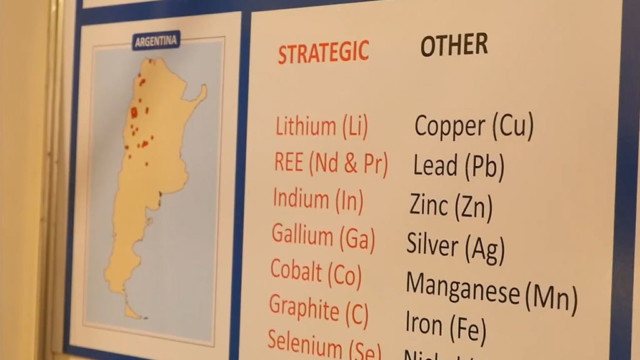The stunning salt flats that span the north of Argentina and Chile as well as the south of Bolivia make up a region known as the Lithium Triangle.
The area holds over half of the world’s lithium reserves. Demand for the metal, which is used in batteries, is expected to triple by 2025.
CGTN’s Joel Richards looks at how the three countries are aiming to use the resource.
The salt flats of South America make up one of the world’s most remarkable landscapes.
It’s a popular tourist attraction, but beneath the feet of visitors, there’s a resource many believe will play a vital role in the future global economy. It’s in the region where more than half the world’s lithium can be found.
“Lithium is the lightest metal, it is very electro-positive, the key is that lithium enables energy density, very high energy density, said Ernesto Calvo from the University of Buenos Aires. “So many people are working on lithium oxygen batteries as an alternative with energy density comparable to fossil fuels.”
Lithium is extracted through evaporation and used in batteries for electronic devices such as cell phones. Since larger batteries are needed to power the growing electric vehicle market, some analysts say demand for lithium is expected to nearly triple by 20-25.
In Bolivia, President Evo Morales’ government oversees production. By law, investors may only hold a 49 percent stake in any venture, the state holding the controlling 51 percent share.
“Bolivia’s history is marked by bitter experiences when it comes to our natural resources.” Said Bolivia Lithium Resources Manager Juan Carlos Montenegro, “We see the need to create partnerships with transnational companies, but as the president says, we look for partners, not masters.”
Neighboring Chile is one of the world’s largest lithium exporters but has strict quotas on production. So it is in Argentina, where the government is opening up its mining sector to investment, where small companies see the best opportunities in the region.
Lithium could drive that growth in Argentina, which aims to produce half of the world’s lithium by 2020, according to the energy and mining ministry. As the renewable energy and electric vehicles sectors grow, so will Argentina, Chile and Bolivia in the way they shape the so-called ‘lithium economy.’
 CGTN America
CGTN America

